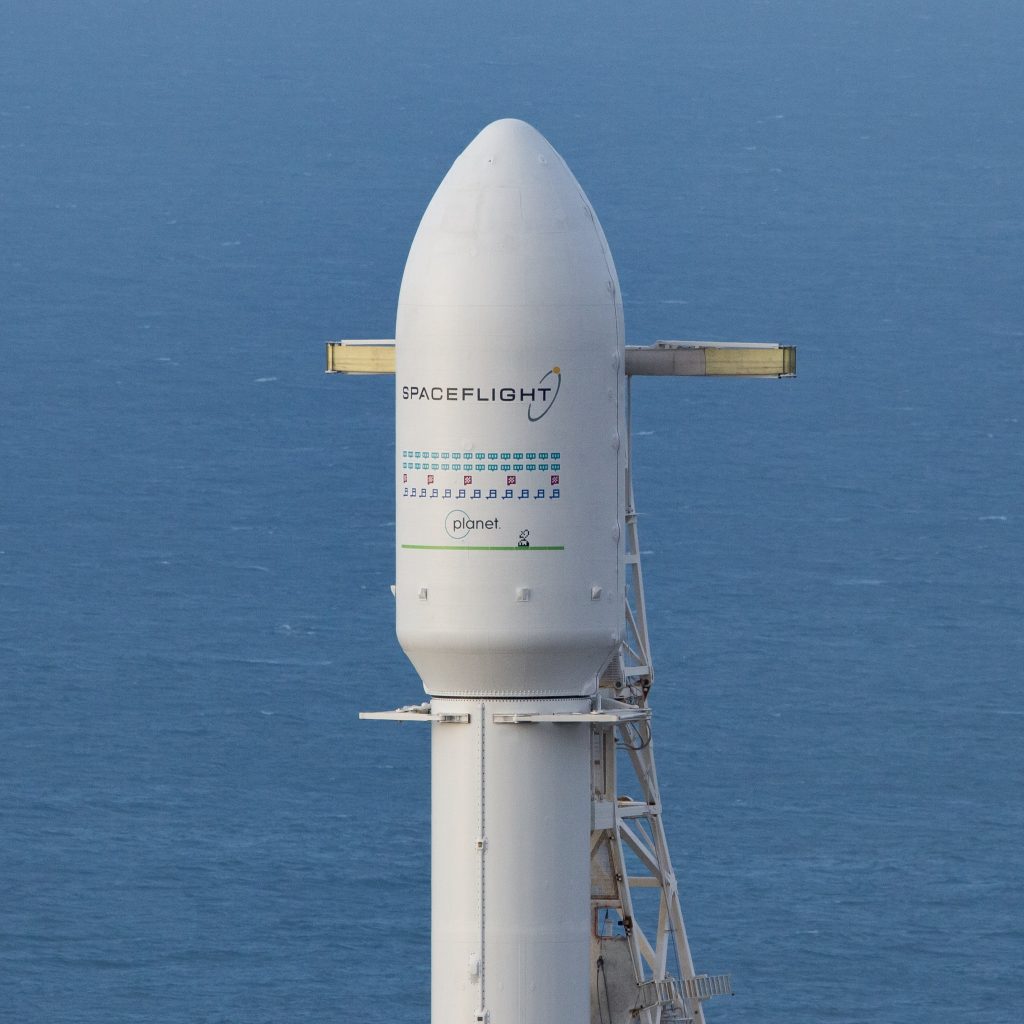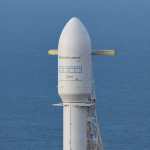

Spaceflight will launch two payloads on its first rideshare mission to Geosynchronous Transfer Orbit (GTO) — the mission is scheduled for no earlier than mid-February 2019 aboard a SpaceX Falcon 9 launching from Launch Complex 40 at Cape Canaveral Air Force Station, Florida.
The primary payload on the mission is a telecommunications satellite for the South East Asia region. Built by SSL, a Maxar Technologies company that also procured the launch vehicle, Spaceflight will also manage the launch of the two secondary payloads, Israeli non-profit SpaceIL’s lunar lander, and the U.S. Air Force Research Lab’s (AFRL) experimental small satellite, S5.

File photo of Spaceflight’s SSO-A mission’s fairing. Image is courtesy of the company.
This will be Spaceflight’s first mission beyond LEO and the company’s first combined launch with SSL. In addition to securing capacity aboard the launch vehicle, Spaceflight is handling all the mission management and integration services for the lunar lander, called Beresheet (Hebrew for in the beginning), and AFRL’s spacecraft. This includes a number of services, from pre-launch design, assembly, and integration to the final analysis and testing of the architecture before the spacecraft are encapsulated into the rocket.
- The spacecraft are headed to two different orbits. Once the Falcon 9 reaches GTO, it will separate SpaceIL’s lunar lander with a custom separation system. Beresheet will orbit Earth, gradually increasing its apogee until it can maneuver to be captured by the Moon’s gravity. It will travel to the Moon’s surface under its own power, a voyage taking nearly two months.
- Following Beresheet’s deployment, the AFRL spacecraft, built by Blue Canyon Technologies, will remain attached to the telecommunications satellite as they continue their journey to Geostationary Orbit (GEO). Before the telecommunications satellite reaches its final GEO position, it will separate the S5 spacecraft which will then turn on and start its mission.
- SpaceIL’s four-legged lunar spacecraft, which was competing in the Google Lunar XPrize, will be the smallest spacecraft to land on the Moon, at only 1,322 pounds, or 600 kilograms. Once it has completed its mission, Beresheet will represent Israel’s first spacecraft and the world’s first privately funded spacecraft to reach the Moon. Its mission is to transmit photos and video of its new home and conduct scientific measurements. Upon the mission’s completion, it will remain as a lunar time capsule commemorating this historic accomplishment.
This mission marks Spaceflight’s inaugural launch of 2019 and the first mission following SSO-A, the company’s historic, dedicated Falcon 9 rideshare mission that launched 64 smallsats from 34 organizations from 17 countries in December of 2018. To date, the company has negotiated the launch of more than 200 satellites and has plans for approximately 10 missions in 2019 launching nearly 100 payloads.
Executive Comment
Curt Blake, the CEO of Spaceflight, said this is an important mission for Spaceflight as the firm’s expands and evolves customer offerings. The launches being pursued continue to get more sophisticated and demonstrate that Spaceflight’s expertise goes beyond identifying and scheduling launches. The company also offers valuable integration and deployment services that enable customers to reach space in a cost-effective manner and reach their desired orbit successfully. With this mission, Spaceflight is demonstrating that the Moon is within reach.

